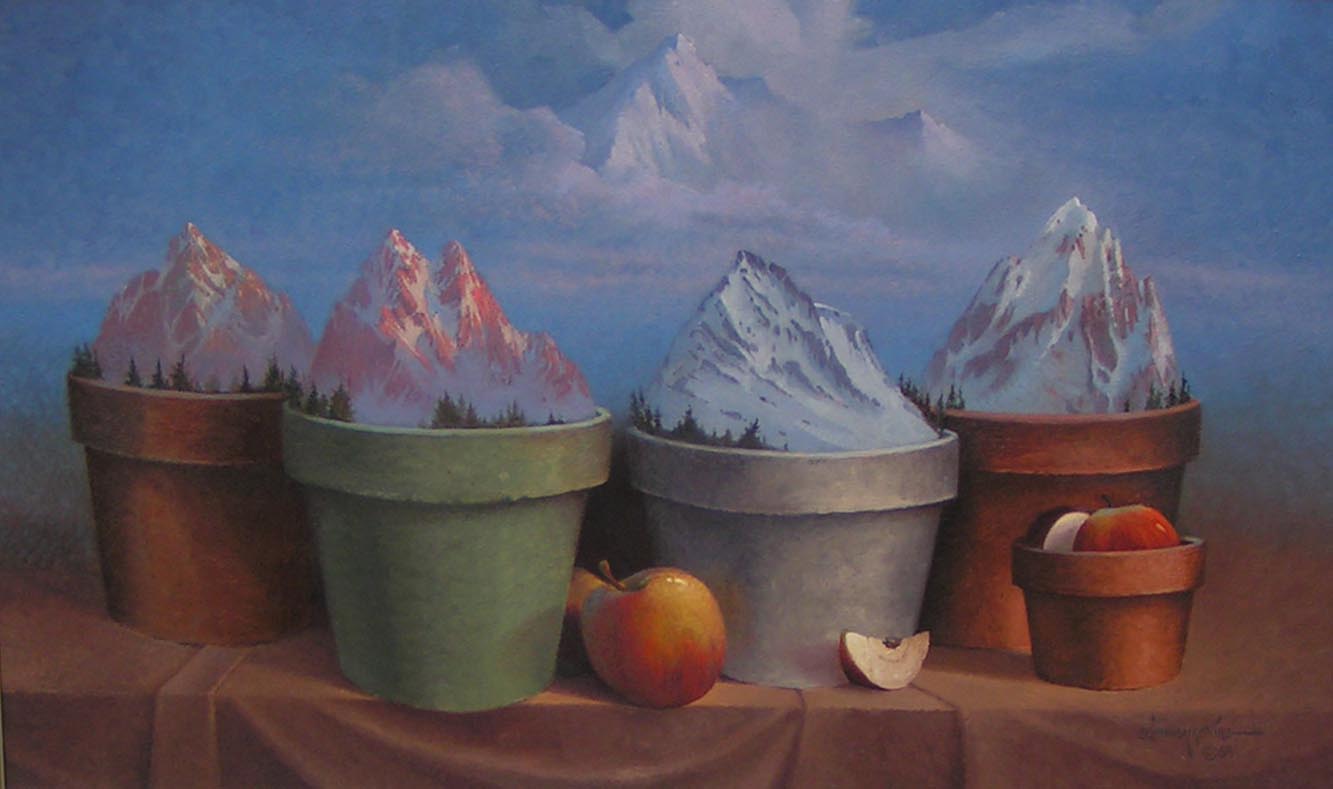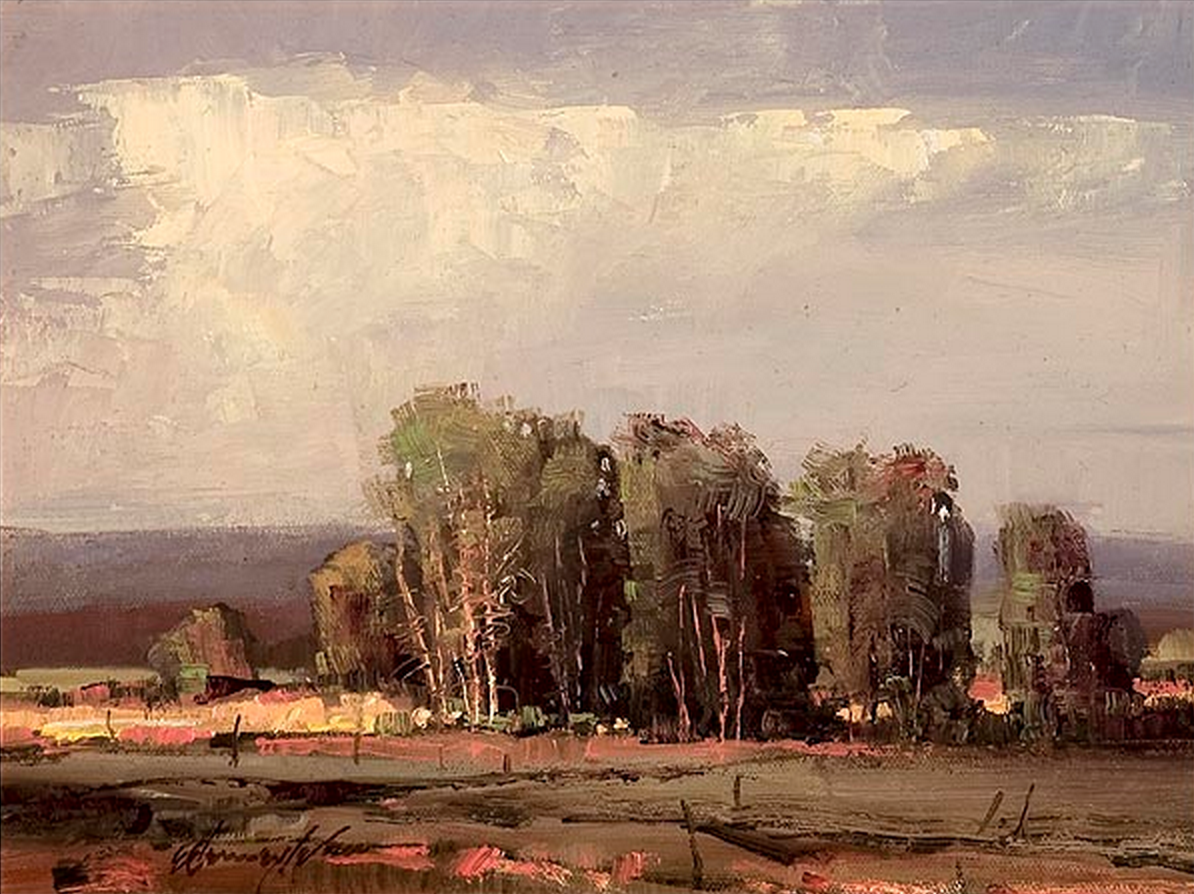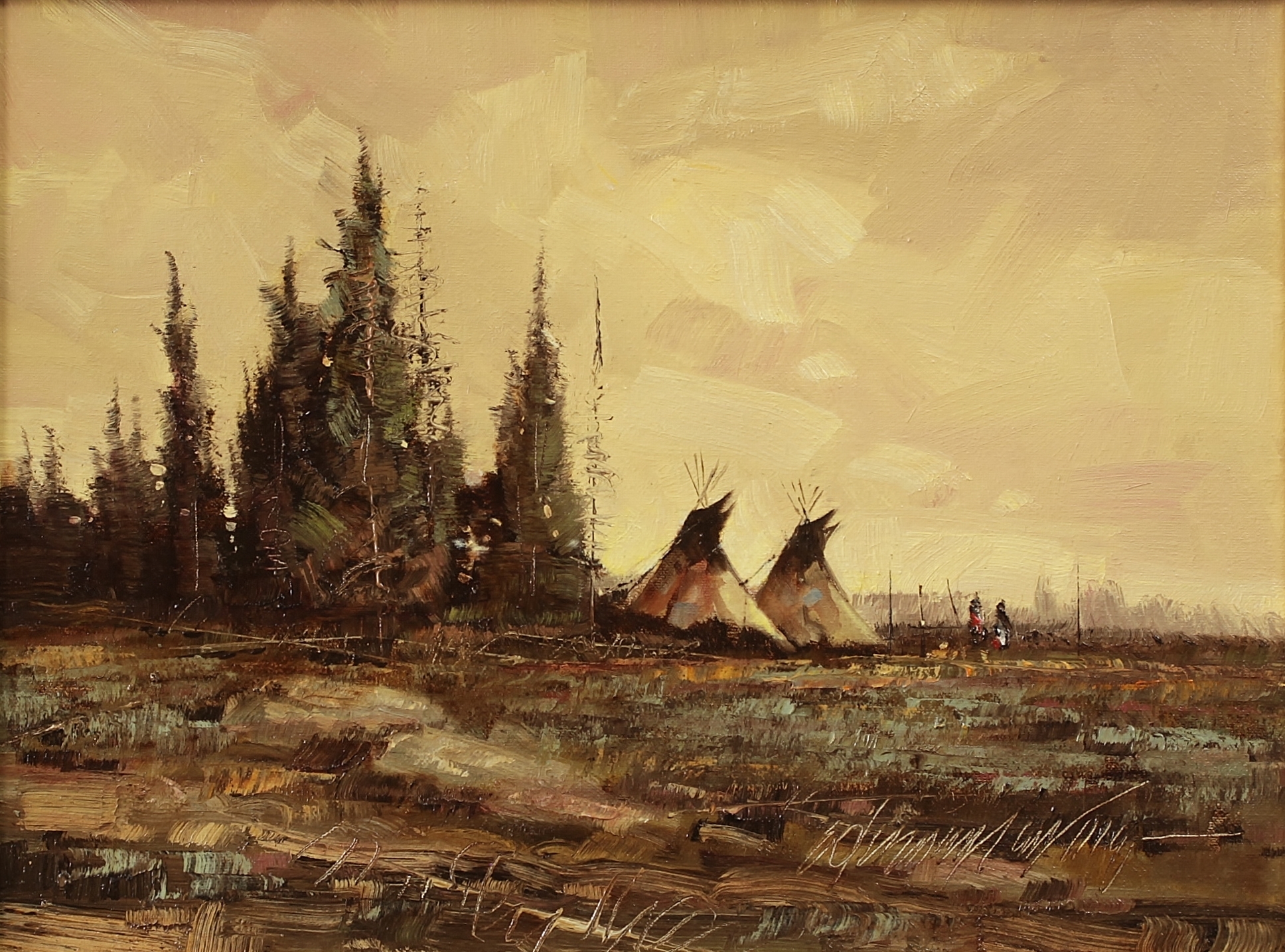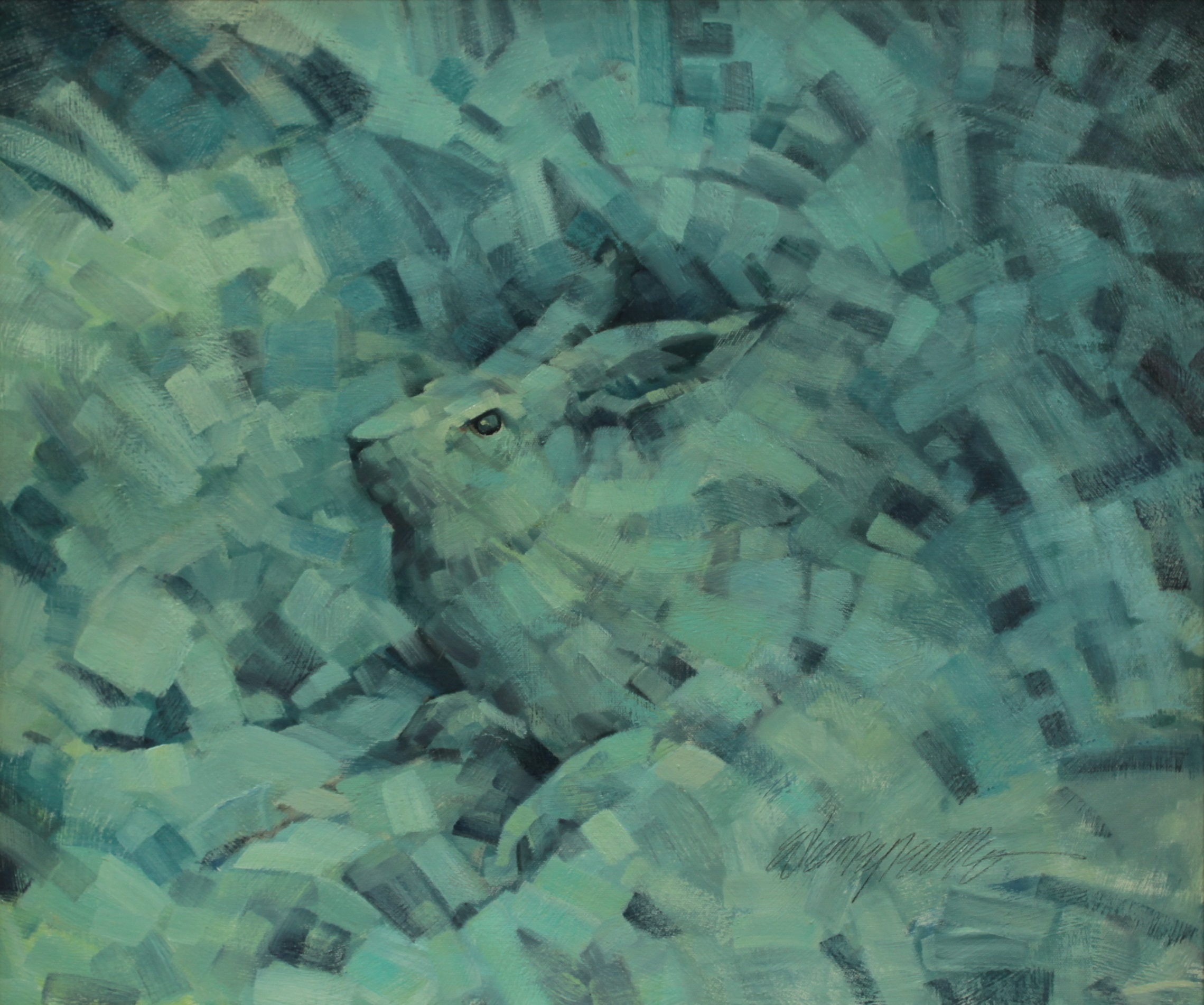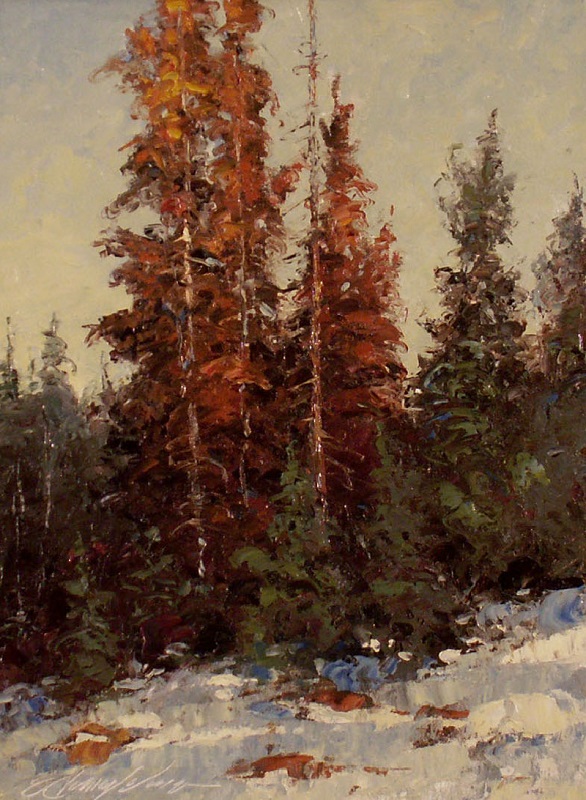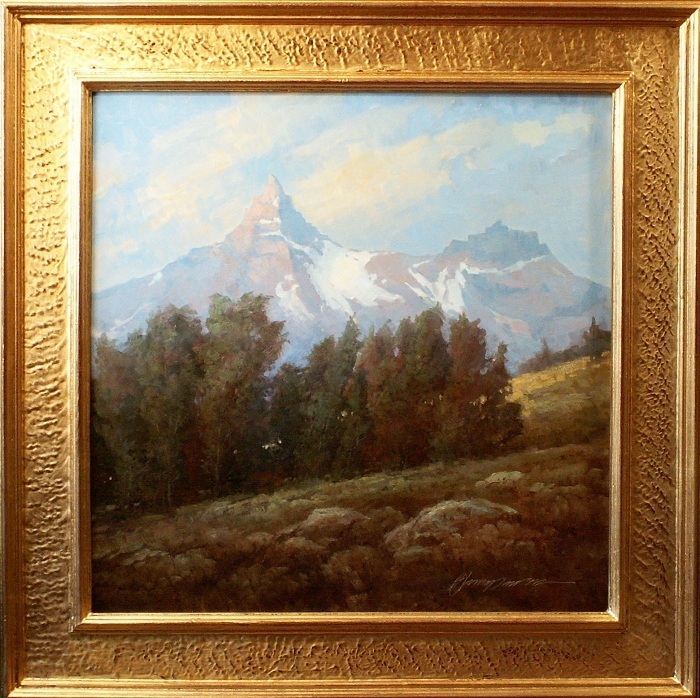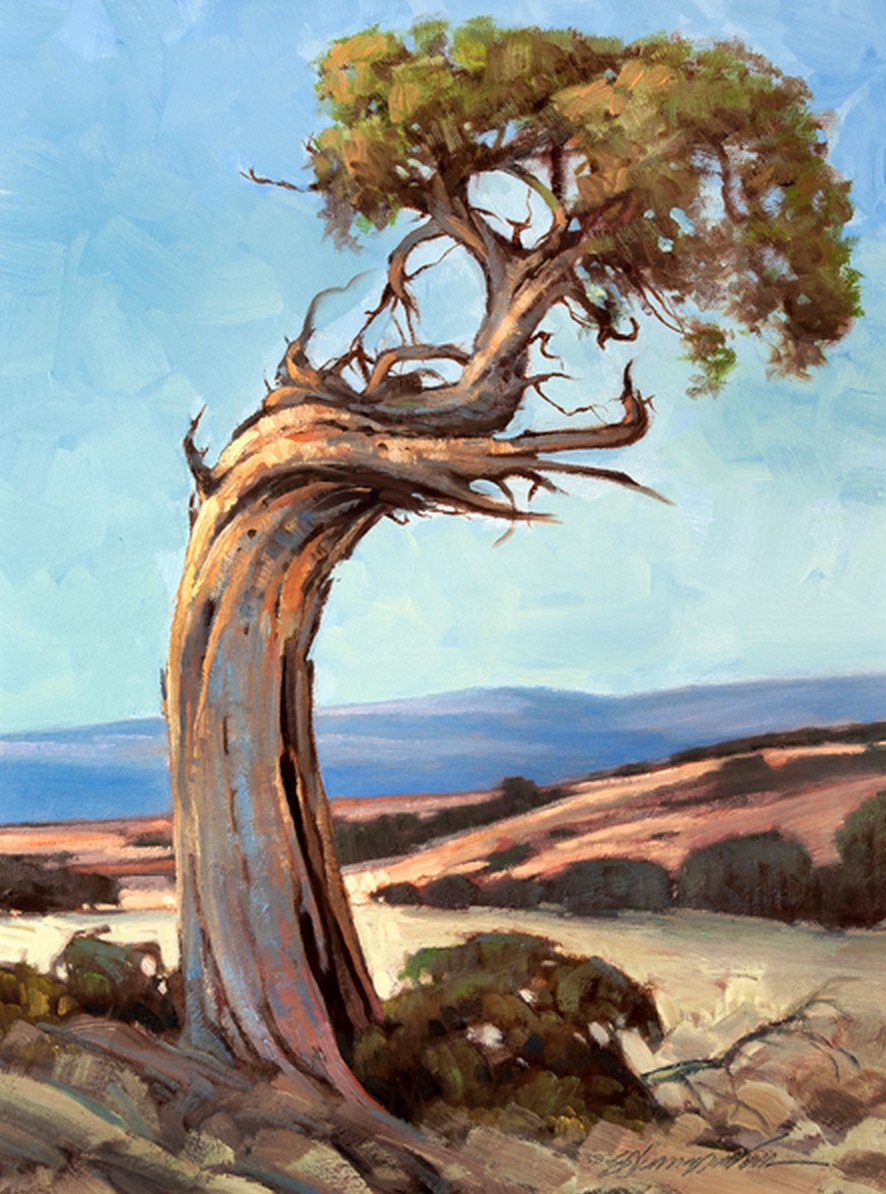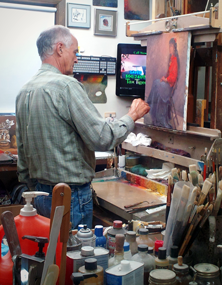E. Denney Neville is an accomplished painter who has made a career of painting the majestic landscapes of Wyoming. He has also worked as an illustrator, cartoonist, and in the animation industry. He earned a BFA from the Art Center College of Design. NeVille also assisted Stan Lynde for six years producing the cartoon strip Hipshot and Rick O’Shay. NeVille lives with his wife in Byron, Wyoming.
Describe yourself as a painter. I would like to be described as a creative painter. Just to be technically good would be totally boring. The real joy in painting is to explore, invent, find and to even make the unnoticed and unconsidered a work of art that gives a sense of deep satisfaction. Without the knowledge of creative editing, a painting is flawed and lowered in its potential to fully achieve a perfect art. Being flawed ourselves, as we work and learn we should grow in our understanding toward being a better artist. As we paint sincerely over a period of time our work should become more perfect, though would still be less than perfect. The lofty concept of perfection will and should always annoy us. Thus annoyed there will always be opportunity to strive toward being better. I find myself on a soap box preaching. Possibly to no avail except to insert a cartoon (below).
Some artist said, I don’t know who, “We must paint at least four full days a week to keep from getting worse.” That artist was profoundly correct. Practice is an absolute necessity. A knowledge of art history is an absolute necessity and should not be narrow. We should understand something about all the schools of art and note that traditional academic training is in some way fundamental to all of them. If I were asked to list the two most important issues in good art and correct training it would be drawing and design, and in a curious way, to me, they are one in the same.
You have experimented with different styles. You will notice in the samples of my work that I have explored painting in several different styles. They have all helped in my development as a painter. Not all were successful. Some were to a certain extent. The less successful are buried beneath another painting, hopefully more successful. I like painting over old paintings and leaving some of that surface as part of the later painting. The unexpected, unplanned and the accidental things, if noticed, are some of the creative surprises that make painting fun for the way I like to work.
How do you approach a new landscape? Do you work en plein air, from pictures, from memory? I really like painting from memory, but feel it a necessity to paint plein air and use photos as a reference, but only as a reference. If you copy a photo, per se, you will paint design mistakes and that can totally ruin a work of art. Cameras can, and have become, the most dangerous crutch in art if their use is abused and misunderstood. All developed technology can be of benefit in creating good art, but can also be a huge deficit if used without knowledge of a few certain things, mostly in the manner of distortion and alignments. I often hear people in workshops lamenting that they don’t like a certain painting they or someone else did. My answer is always, “That is a good sign that you are learning to determine the successful from the unsuccessful, the disaster-pieces from the masterpieces.” Two steps forward and only one back is still progress. The step backward can be the one most important when we recognize it was and is the wrong direction. My approach to a landscape painting starts as a design. From there I start loose then tighten the detail, but only to a point where I feel why I wanted to paint the scene in the first place.
